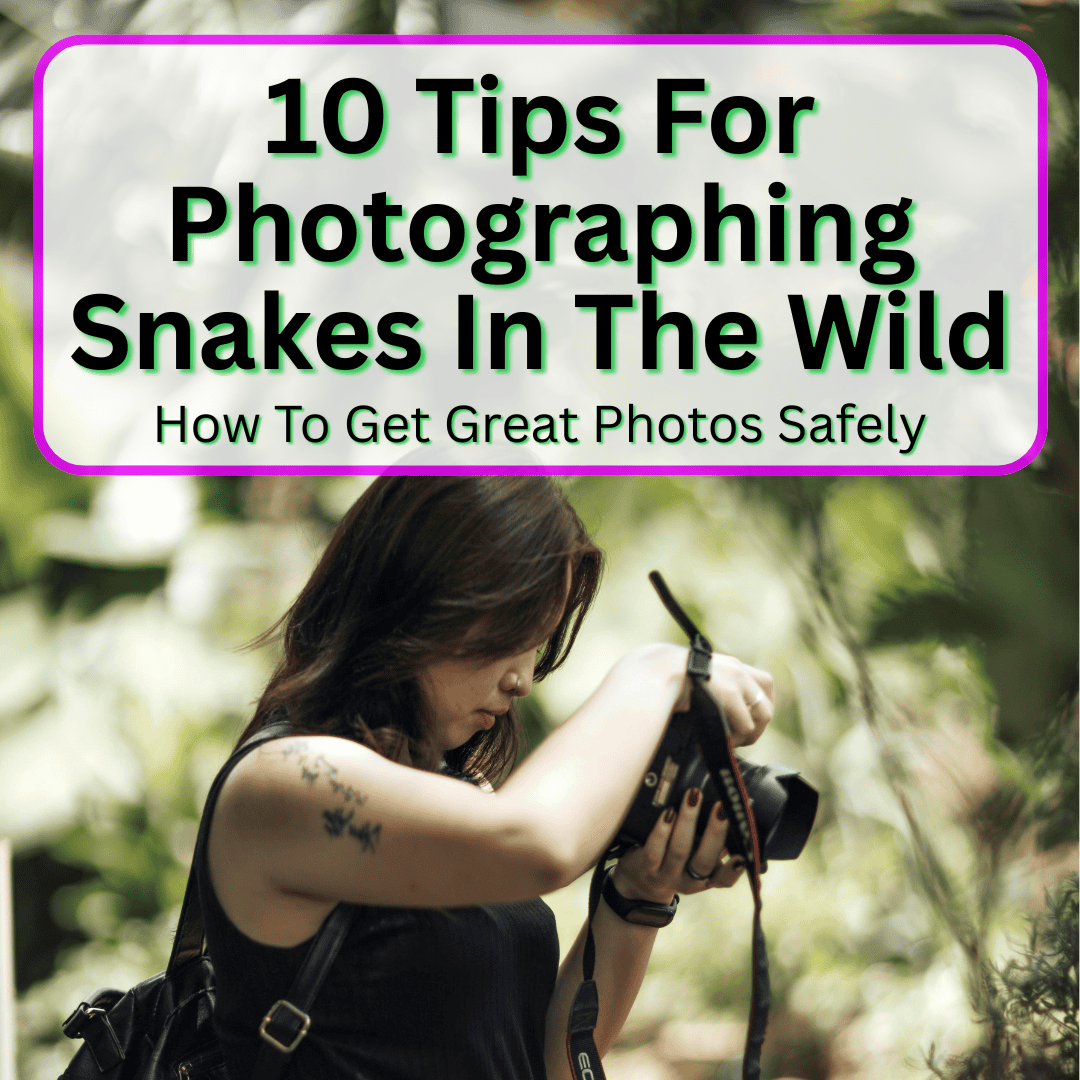
But also a bit nerve-wracking.
These creatures are fascinating to photograph, especially with all those wild patterns and unpredictable behaviors.
But honestly, snake photography isn’t like snapping pictures of birds or deer. You’ve got to bring a different skill set and a good dose of caution.
If you want great snake photos, you need to understand their behavior, pick the right gear, and never forget about safety.
Spend some time learning about local species, when they’re most active, and where you might actually find them.
A solid telephoto lens can make all the difference, letting you snag sharp images without getting anywhere near striking range.
Tips For Photographing Snakes In The Wild
Follow these tips to get better photos and to help ensure you, and your photography subjects, stay safe.
1. Know The Active Season Of The Snake Species You Want To Photograph
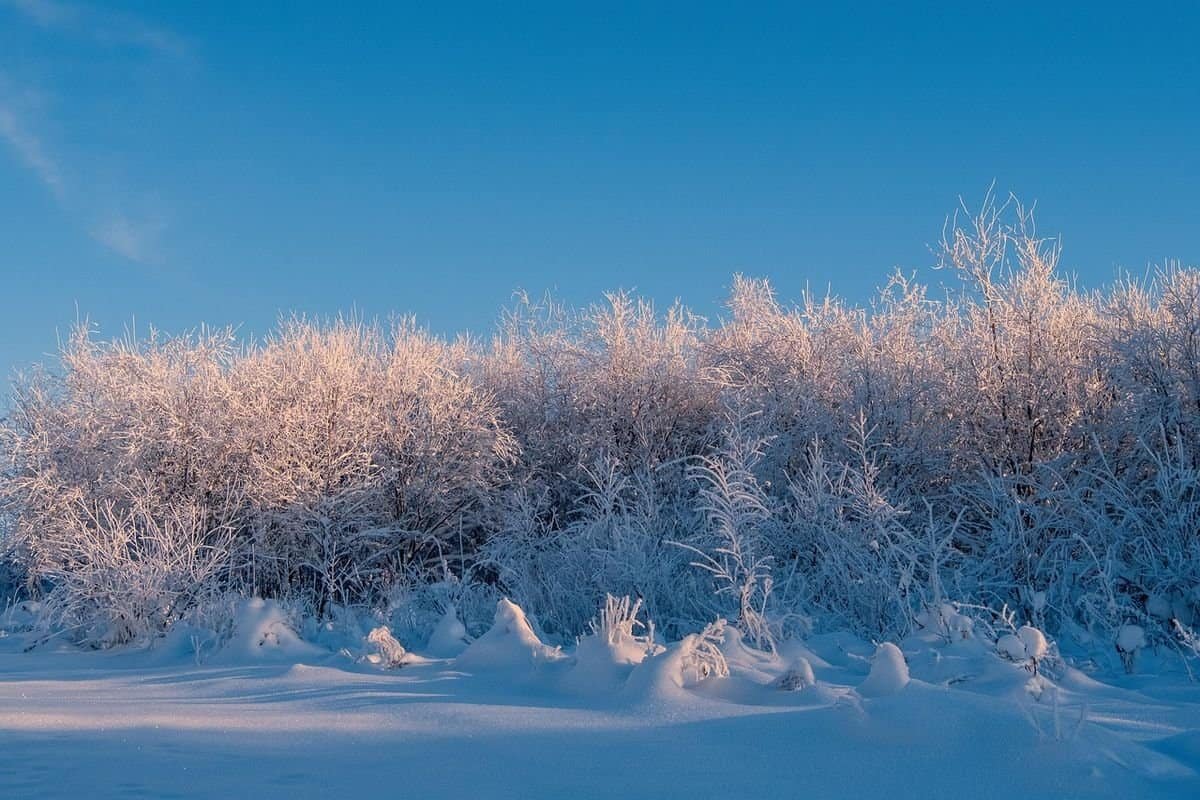
Snakes aren’t out and about all year. When it’s cold, they pretty much vanish, slipping into brumation (think of it as reptile hibernation). Every species has its own schedule, so you’ll want to figure out when your target snakes are most likely to show themselves.
Where you live matters too. Down in Florida, snakes might be moving in January, while up north, they’re still buried away. Usually, spring and fall are prime time. Snakes are out basking or on the hunt, and the weather’s not too extreme.
Summer can work, but midday heat can make them disappear until things cool down. Early mornings and evenings? Much better odds.
Check field guides or local wildlife reports before heading out. These resources can help you pinpoint the right window for your area.
2. Maintain A Safe Distance To Avoid Disturbing Or Threatening The Snake
Honestly, staying back is rule number one. If you’re too close, the snake’s gonna know. And it won’t like it. For most species, 10 to 15 feet is a safe bet. With big snakes (pythons, boas), you might want 15 or even 20 feet.
Venomous snakes? Don’t test your luck. They can strike farther than you think, so give them all the space they want.
When you crowd a snake, it’ll either bolt, hide, or get defensive. None of those make for good photos, and you’ll just stress it out.
Grab a telephoto lens so you can get those close-ups without creeping in. Snakes look way better when they’re relaxed and acting natural.
Keep an eye on their body language. If a snake coils up, raises its head, or darts off, you’re pushing your luck. Just back off and let it chill. Our article on ways to tell if a snake is aggressive or defensive can help you in reading a snake’s body language.
Some species are more skittish than others. A little research goes a long way before you pack your camera bag.
3. Use A Telephoto Lens To Capture Close-Up Shots Without Getting Too Close
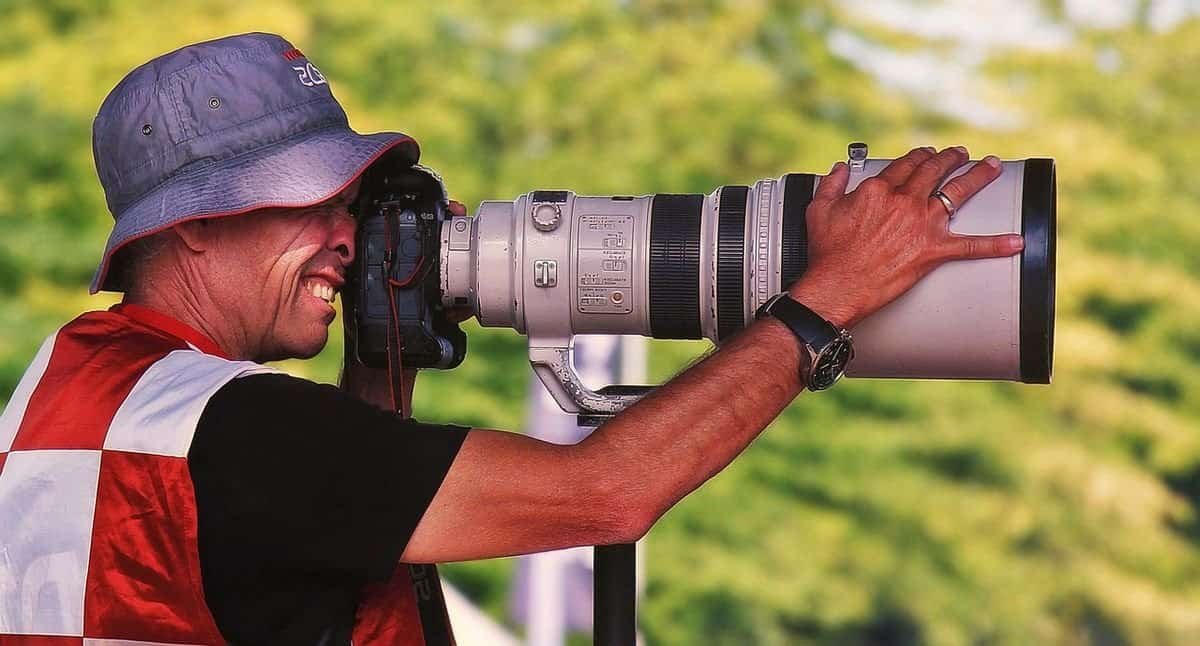
Your telephoto lens is basically your best friend here. It lets you zoom in on all those details without invading the snake’s space. You can stay safe and comfortable, and the snake probably won’t even notice you. That’s when you get the best shots.
Wildlife photography just works better with a lens that brings you closer. You’ll catch every scale, every shimmer.
Try a focal length between 70 mm and 300 mm. That’s usually enough reach for most situations, and you won’t have to worry about getting shaky hands.
Staying back means the snake won’t feel threatened, so you’ll see more natural behavior. You can even get those macro-style shots. There is no need to crawl around in the dirt or risk a bite. Plus, telephoto lenses give you that nice blurry background, making your subject pop.
4. Prioritize Natural Lighting And Avoid Harsh Flash To Keep Snakes Calm
Natural light is just better for snake photos. It’s softer, more even, and doesn’t freak out your subject. Snakes really don’t like sudden flashes. You’ll just scare them off or make them hide.
Early morning and late afternoon are your golden hours. The light’s warmer, softer, and way more flattering.
If you absolutely have to use flash, slap on a diffuser. Otherwise, you’ll get glare and harsh shadows all over those beautiful scales.
Lots of snakes hang out in shady spots. You’ll need to work with what you’ve got. Move around to catch the best angle.
Try to avoid those harsh shadows that swallow up details. Overcast days? Actually pretty great, since the clouds act like a giant softbox.
Don’t be afraid to bump up your ISO if it’s a bit dark. That way, you can skip the flash and still get crisp shots.
Ultimately, calm snakes make the best subjects. Natural light helps keep them chill and acting like themselves.
5. Focus On Capturing Unique Patterns And Textures On The Snake’s Skin

Snake skin is just wild. Every species has its own signature look, and some are truly stunning. Get close enough to show off those tiny details. The way each scale catches the light can add so much depth.
Look for bold colors or striking patterns, like stripes, spots, diamonds. They can really stand out against the background.
Side lighting works wonders for texture. It makes the scales pop, almost like you can reach out and touch them.
Focus on the sharpest part of the pattern, usually the closest area. Let the rest fade a bit so the main design grabs attention.
The belly, back, and head all have different textures. Don’t be afraid to experiment and shoot from different angles. You might be surprised by what you find.
6. Photograph Snakes In Interesting Postures Or During Movement For Dynamic Shots
If a snake’s just lying flat, it’s a bit dull. Try to catch them in action or in cool poses.
Coiled up or in a defensive stance? That’s when you get the drama and personality.
Movement shots are awesome too. Catch them slithering through grass or scaling a rock—it adds energy and tells a story.
Look for those S-shaped curves or raised heads. They really show off the snake’s attitude.
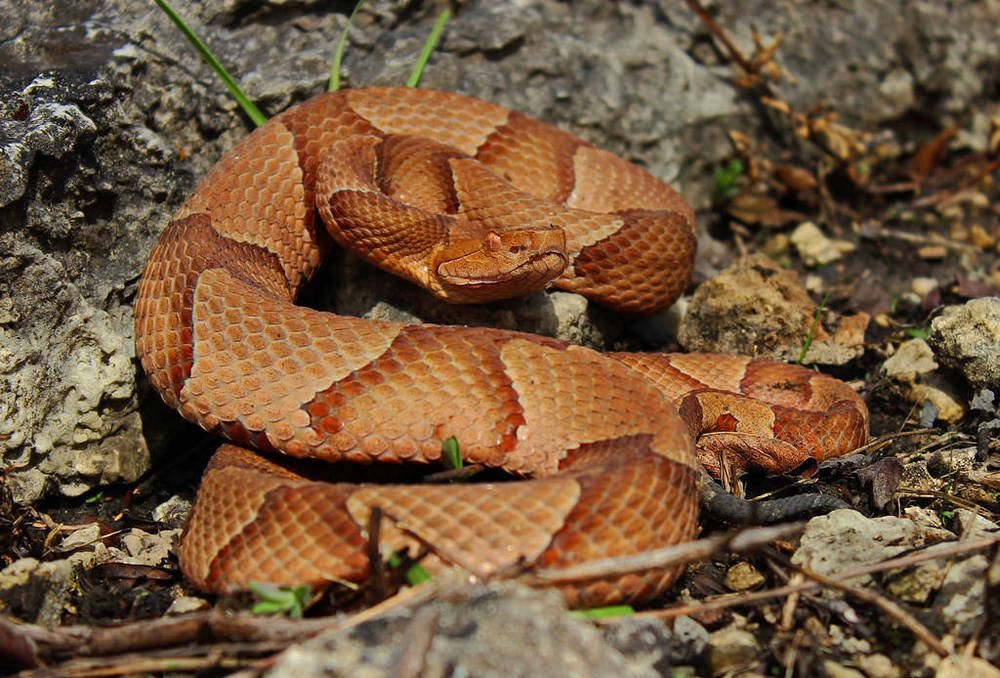
Early mornings are usually best for action. Snakes are more active and you’ll have softer light. Use a fast shutter speed so you don’t end up with a blurry mess.
Patience is everything. Don’t poke or prod—just watch and wait for the right moment. Let the snake do its thing.
Spend some time observing before you start shooting. You’ll get a feel for when something interesting is about to happen.
7. Scout Locations Ahead Of Time To Learn Snake Habitats And Behaviors
Scouting your spot before you shoot makes a world of difference. You’ll figure out where snakes like to hang out and how they behave there. Try to visit at different times of day. Some snakes are early risers, others are night owls. Keep notes. You’ll start to see patterns.
Check under rocks, logs, thick brush—anywhere that offers cover or sun. Snakes love a good basking spot. Dig into the habits of local species. Knowing what they eat and where they hunt helps you predict where they’ll show up.
Weather matters too. Snakes don’t like it too hot or too cold. Watch for those perfect temperature windows. Think ahead about where you’ll stand or kneel, so you’re not scrambling for a safe angle when the moment comes.
Understanding their behavior isn’t just for photos. It also helps keep you safe. You’ll spot warning signs and know when to back off. That’s good for everyone.
8. Wear Protective Clothing And Boots For Safety In Wild Environments
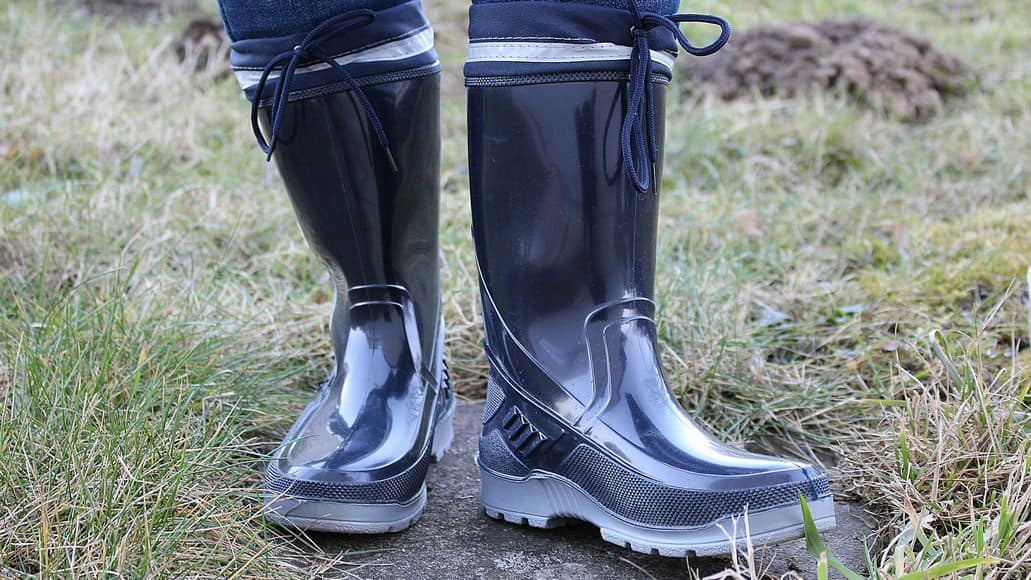
What you wear out there matters a lot. Most bites happen on the lower legs, so don’t skip the boots. Go for boots that cover your ankles, at least 10 inches high. Leather or rubber is your friend here; thin sneakers just won’t cut it.
Long pants made of thick material help too. They’re an extra barrier if you accidentally get too close. Heavy fabric beats out anything flimsy. Long sleeves are a good call, especially if you’re pushing through brush. You never know what you’ll brush up against.
Gloves come in handy when you’re moving sticks or rocks. Never stick your bare hands where you can’t see.
Match your gear to the terrain. Rocky trails need sturdy boots; swamps call for waterproof options.
Snakes don’t bite for fun. They do it when they feel cornered. Good clothing gives you precious seconds to step away if something goes wrong. Just toss your protective gear in your camera bag. Better safe than sorry, right?
9. Be Patient And Move Slowly To Avoid Startling The Snake
Snakes pick up on movement and noise fast. If you rush, you’ll probably just scare them off. Or worse, make them defensive.
When you spot one, pause. Take a breath, think about your next move. Charging in is a recipe for disaster. Move slow and steady. No sudden gestures, no clanking gear. Soft steps keep things calm.
Watch how the snake reacts. If it coils or lifts its head, you’ve gone too far. Back up and give it space. Take your time setting up. The best shots come from patience, not pushing your luck. Let the snake get used to you first.
If the snake seems stressed, just call it. No photo is worth making an animal uncomfortable. Relaxed snakes make for way better photos anyway.
Understanding Snake Behavior
Knowing how snakes act isn’t just smart. It’s essential. You’ll stay safer and get better photos if you pay attention to their moods and habits.
Identifying Common Wild Snake Habits
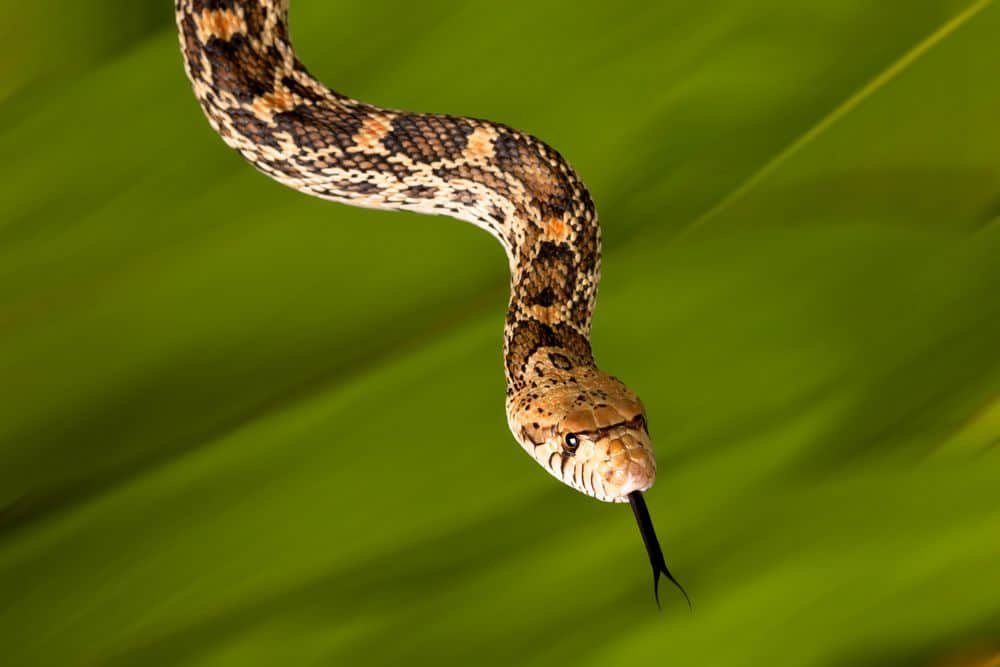
Most snakes have a routine. Some hunt at dawn or dusk, others are out at night, and a few like the heat of the afternoon.
Watch for that tongue flicking in and out. They’re “smelling” the air, figuring out what’s around.
Common snake behaviors:
- Basking in sunny spots
- Hiding under rocks, logs, or thick plants
- Moving slow unless they’re spooked
- Freezing up when they sense a threat
In winter, many snakes go into brumation and basically disappear for a while.
Snakes often use the same trails and hiding spots. If you see one in a certain place, check back another day—you might get lucky again.
Recognizing Signs Of Distress In Snakes
A chill snake moves slow, head low, body loose. Sometimes they’ll just ignore you if they feel safe.
Signs a snake’s getting stressed:
- Head raised high
- Body tightly coiled
- Mouth open, showing fangs
- Hissing
- Tail vibrating or shaking
Some will flatten out to look bigger, or strike at the air. If you see this, back off fast. Never block a snake’s escape. If it feels cornered, it’ll act aggressive. Always leave an out.
If the snake looks upset, just stop and back away. Give it a minute. Once it calms down, you might get another shot. But don’t push it.
Essential Safety Considerations
Snake photography means you’ve got to keep your wits about you. Always maintain a safe distance from unpredictable animals and having a plan for when things go sideways. A bit of forethought can go a long way toward keeping you out of trouble and letting you focus on the shots you want.
Choosing Safe Distances When Shooting
Most snakes can strike about half their body length. So, for a 6-foot snake, you’re looking at a 3-foot reach. Honestly, it’s wise to double that and keep even farther back.
Instead of creeping closer, grab a telephoto lens. Something like a 200 to 400mm lets you get those crisp, detailed photos from 15 or 20 feet away. Not only does this keep you safer, but it also spares the snake a lot of stress. Everybody wins.
Safe shooting distances by snake size:
- Small snakes (under 2 feet): Stay 6+ feet away
- Medium snakes (2-4 feet): Stay 10+ feet away
- Large snakes (4+ feet): Stay 15+ feet away
Never step over logs or rocks. Snakes love to tuck themselves away in those spots. Just walk around anything you can’t see over so you know what you’re stepping on. During hot days, they’re often under cover, trying to stay cool.
Wear long pants and closed-toe boots. Light-colored clothes make it easier to spot a stowaway if one climbs on you (it happens). And don’t reach into places you can’t see. It’s just not worth the risk.
First Aid Basics For Snake Photographers
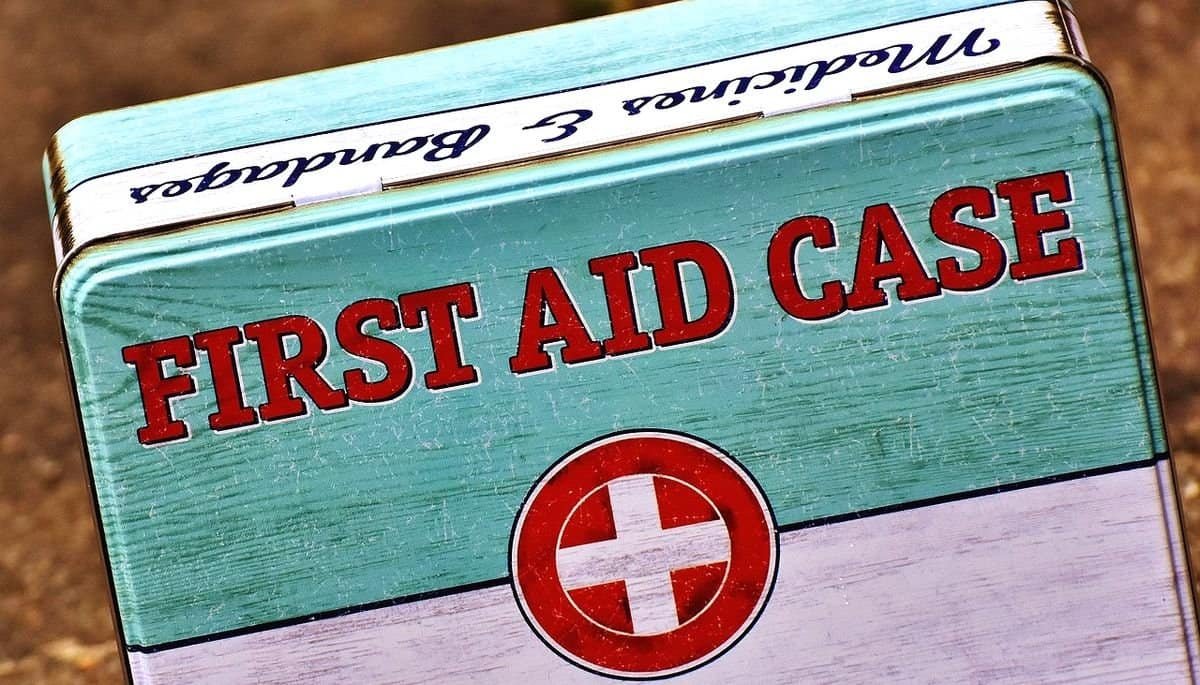
Bring a basic first aid kit, with bandages, antiseptic, and emergency numbers. If you’re heading somewhere with venomous snakes, toss in a snakebite kit. Check where the nearest hospital is before you wander off with your camera.
If a snake bites you, try to stay calm and call for help right away. Take off jewelry or anything tight on the bitten limb before it swells. Forget about cutting the wound or sucking out venom. It doesn’t help.
Emergency steps for snake bites:
- Call 911 or your local emergency number
- Keep the bitten area below heart level
- Remove rings, watches, or tight clothing
- Cover the bite with a clean, dry bandage
- Mark the edge of swelling with a pen every 15 minutes
If you can do it safely, snap a photo of the snake. That can really help doctors pick the right treatment. It’s worth remembering: most bites happen when someone tries to mess with the snake.
Before you head out, brush up on which venomous snakes live nearby and where they like to hang out. Knowing what to expect makes it a lot easier to keep yourself safe.
How To Photograph Snakes In The Wild: Conclusion
Snake photography really takes some patience and, honestly, a bit of trial and error. The more you get out there, the more you’ll pick up about how snakes behave and how to work your camera. It’s kind of a learning curve, but that’s half the fun, right?
Safety always comes first when you’re photographing snakes in the wild. Keep your distance. Don’t ever try to move or handle a snake just to get a better shot. It’s not worth the risk, for you or the snake.
If you want to give yourself the best shot (pun intended), try to:
- Look up snake habits before heading out
- Pick camera settings that fit the situation
- Stay calm, move slow—no sudden moves
- Give the snake enough space
Every encounter with a snake is a bit different. Some just freeze, others zip off before you even focus. So you’ll want to stay flexible and ready to change your approach.
Spending time learning about the local species really pays off. You start to figure out where to look, and you’ll have a better sense of when snakes are actually out and about.
Don’t worry if your first photos aren’t all that impressive. Each outing teaches you something new. And sometimes, that’s more valuable than the photos themselves.
Honestly, just watching these animals is a treat. Sometimes, the best part isn’t the pictures you bring home, but the experience of seeing snakes in their world.
Keep your camera handy and your eyes open. Some of the best moments sneak up on you when you’re not expecting them at all.
But above all, have fun and stay safe. Snake photography is a wild way to connect with nature. And with a bit of luck, you’ll end up with some truly stunning shots.
Leave a Reply